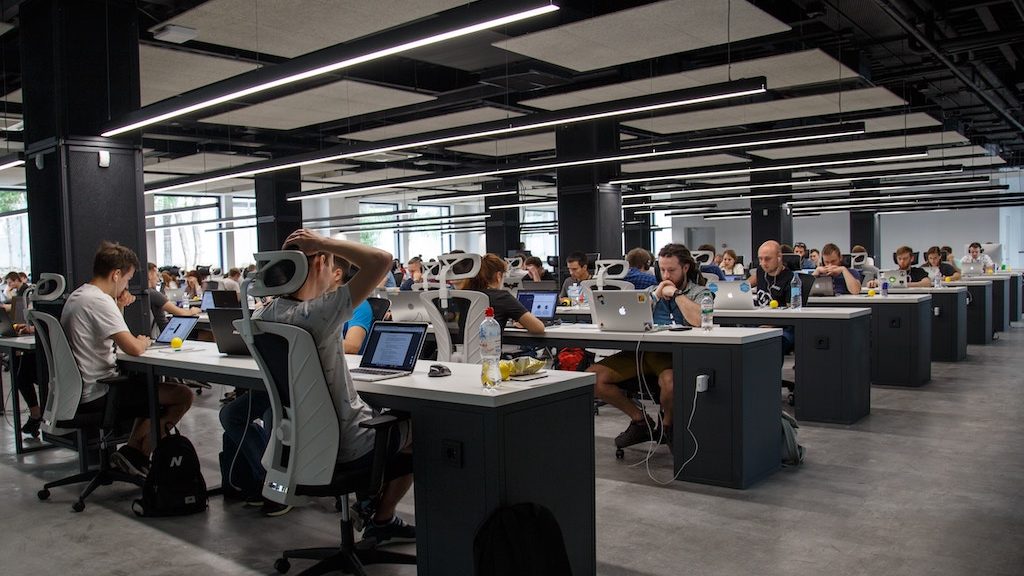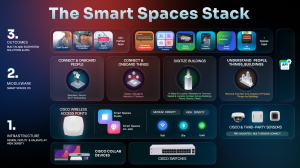
Workplace management involves the strategic organization and optimization of a company’s physical environment to ensure it aligns with and supports the overarching goals of the organization. Through effective space planning, resource allocation, and integrating technology, it enhances space utilization, streamlines operations, and ensures cost-efficiency, thereby creating a conducive and productive work environment for all employees.
What Does a Workplace Manager Do?
A workplace manager’s primary responsibilities encompass managing the office’s physical space, efficiently allocating resources, and addressing employee needs to foster a positive and productive working environment. They implement strategies and utilize advanced tools and software to optimize office space usage, ensuring flexibility and adaptability, while also enhancing the overall employee experience by creating a healthier and more engaging workplace.
Key Concepts of Good Workplace Management
Space Utilization
Space utilization refers to the effective use of all office areas, such as workstations, meeting rooms, and common areas, ensuring that they serve their intended purpose efficiently and are occupied at an optimal level. This concept is crucial because it directly impacts the company’s operational efficiency, employee satisfaction, and cost management. By tracking and analyzing how spaces are used, organizations can identify underused areas and recognize opportunities for improvement, such as reconfiguring layouts or repurposing spaces to better meet current needs and enhance overall workplace functionality.
Employee Productivity & Engagement
A well-designed workplace boosts employee productivity by offering ergonomic comfort, which reduces fatigue and health-related issues, and by creating spaces that encourage collaboration without sacrificing the ability to focus when necessary. Different areas tailored for concentration, creativity, and teamwork can considerably elevate the quality and efficiency of work. Furthermore, a supportive and engaging work environment plays a pivotal role in fostering job satisfaction, which in turn can lead to lower turnover rates.
Safety & Well-being
Workplace management encompasses not only the organization of physical space but also the maintenance of safety standards and the monitoring of environmental factors such as air quality, lighting, and noise levels, all of which contribute to a healthy and secure work environment. Ensuring the physical space is conducive to health includes regular assessments and adjustments to meet safety regulations and promote well-being among employees. Prioritizing this aspect of workplace management positively impacts employee morale, which in turn reduces absenteeism.
Cost Effectiveness
Effective workplace management plays a key role in cost reduction by optimizing resource use—deploying supplies and equipment intelligently—and by managing space efficiently, ensuring every square foot is utilized to its full potential. It also involves reducing energy consumption through smart building technologies and sustainable practices, which not only lowers expenses but also supports environmental responsibility. Close monitoring and analysis of costs and usage patterns can reveal insights on how to further decrease overheads, allowing organizations to channel saved funds into more productive resources, thus boosting overall operational efficiency.
Benefits of an Effective Workplace Management Strategy
Enhanced Employee Productivity
Optimized workplace management enhances employee productivity by creating a better layout that improves resource accessibility, and incorporates supportive spaces for collaboration and individual focus. This strategic arrangement of the physical environment has a profound positive impact on employee morale and focus, as workers tend to feel more comfortable and valued in their workspace. Such an environment not only elevates their productivity but also reinforces their connection to the workplace, leading to higher satisfaction and engagement levels.
Improved Space Utilization & Reduced Costs
Improved space utilization ensures that every area of the office is actively contributing to the company’s goals, thereby eliminating underutilized or unused spaces. By meticulously tracking how different areas are used, organizations can identify opportunities for cost savings and may be enabled to downsize their real estate footprint without impacting productivity. This strategic approach to space management not only aids in optimizing operational costs but also aligns the physical workplace more closely with the company’s objectives and efficiency targets.
Real-time Insights for Strategic Planning
The use of real-time data and analytics in workplace management provides a powerful tool for making informed decisions, such as rearranging layouts or adjusting resource allocation to match current demands and usage patterns. These insights enable organizations to identify trends and inefficiencies, allowing for timely and data-driven adjustments to optimize their physical spaces. Consequently, businesses can enhance overall workplace performance and adapt quickly to changing needs, ensuring that their environment supports both employee productivity and organizational goals effectively.
Streamlined Operations
A structured approach to workplace management streamlines daily operations by eliminating inefficiencies and creating a more organized work environment, thereby allowing employees to concentrate on tasks without the distraction of operational complications. Workplace management tools play a crucial role here, by providing a consolidated view of workplace needs and activities, and enabling quick decision-making to ensure that resources are utilized effectively.
Essential Workplace Management Strategies
Space Planning & Office Layout Optimization
Space planning involves the intentional design and arrangement of office areas to maximize function and flow, ensuring that physical spaces efficiently support the tasks and processes essential to the business. It is crucial that organizations take into account diverse work styles when designing office layouts, incorporating a variety of spaces that cater to both collaborative projects and individual concentration. By doing so, companies can create dynamic environments that enhance productivity and adaptability. This thoughtful approach to workspace design helps facilitate seamless operations and enables employees to perform optimally by aligning the physical surroundings with their diverse needs and preferences.
Adopting Workplace Management Software
Workplace management software centralizes data, creating a unified platform that simplifies the management of physical spaces and streamlines the allocation of resources. This software also offers valuable insights through analytics, aiding decision-makers in understanding utilization patterns and identifying areas for improvement. The benefits of employing such software include real-time tracking and analysis, which allow for immediate adjustments in resource planning and space configuration. These capabilities ensure that the workplace remains efficient and adaptable to changing organizational needs, thereby optimizing both employee productivity and space utilization.
Flexible Work Environment & Agile Spaces
Agile workspaces have gained significant traction, particularly as they adapt to hybrid and remote work styles, facilitating a blend of in-person collaboration and remote work flexibility. These dynamic environments support a seamless transition between different work modes, fostering teamwork while also respecting individual preferences and work habits. To meet the varying demands of a modern workforce, it is advisable to implement modular spaces that can be easily reconfigured for a range of activities, from group meetings and collaborative projects to quiet zones for focused individual work. Such versatility in workplace design not only maximizes space utilization but also contributes to sustaining employee engagement and productivity in an evolving work landscape.
Environmental Monitoring & Energy Management
Monitoring environmental factors such as air quality, temperature, and lighting is crucial in ensuring employee comfort and safety, directly impacting health and well-being, as well as productivity. By maintaining optimal conditions, employers can prevent potential health issues and create a work environment that supports peak performance. Additionally, implementing energy management initiatives to optimize the use of resources not only contributes to significant cost savings but also fosters a sustainable work environment. This proactive approach to environmental control reduces unnecessary energy consumption and demonstrates a commitment to both employee welfare and ecological responsibility.
Implementing a Workplace Management Solution
To implement a workplace management solution, start by assessing current needs and challenges, to identify the key features necessary for the organization. The next step involves selecting the right software that aligns with these requirements, and integrating it into the existing business infrastructure. Once the software is chosen, it is essential to provide comprehensive training to ensure staff can fully leverage the tool’s capabilities. Regularly reviewing the solution’s performance and being open to adjustments are crucial, as workplace needs evolve, ensuring that the management system continuously supports the organization’s dynamic environment and drives efficiency.
How Cisco Spaces Enhances Workplace Management
Cisco Spaces’ Smart Workspaces harnesses the power of real-time and historical data to help optimize space allocation and resource utilization, ensuring that offices can adapt to the needs of their users efficiently. The Smart Rooms tool includes advanced environmental monitoring capabilities, tracking air quality, temperature, and occupancy, to not only enhance employee comfort and safety but also contribute to a more productive and energy-efficient working environment. By providing managers with deep insights into environmental conditions and how spaces are used, Cisco Spaces empowers them to make informed decisions that foster strategic workplace planning and achieve cost savings. Together with other tools like the Meeting Room Finder, Cisco Spaces also enables employees to save time and improves overall workplace efficiency.
Cisco Spaces achieves this by simply turning the enterprises’ existing Cisco network into a sensor, providing valuable data analytics and insights for continuous improvement in managing the workplace. This is crucial in aligning day-to-day operational aspects with the strategic objectives of any organization, ultimately driving growth and sustainability.
Explore Cisco Spaces’ Smart Workspaces and discover how to optimize office spaces and enhance productivity.


